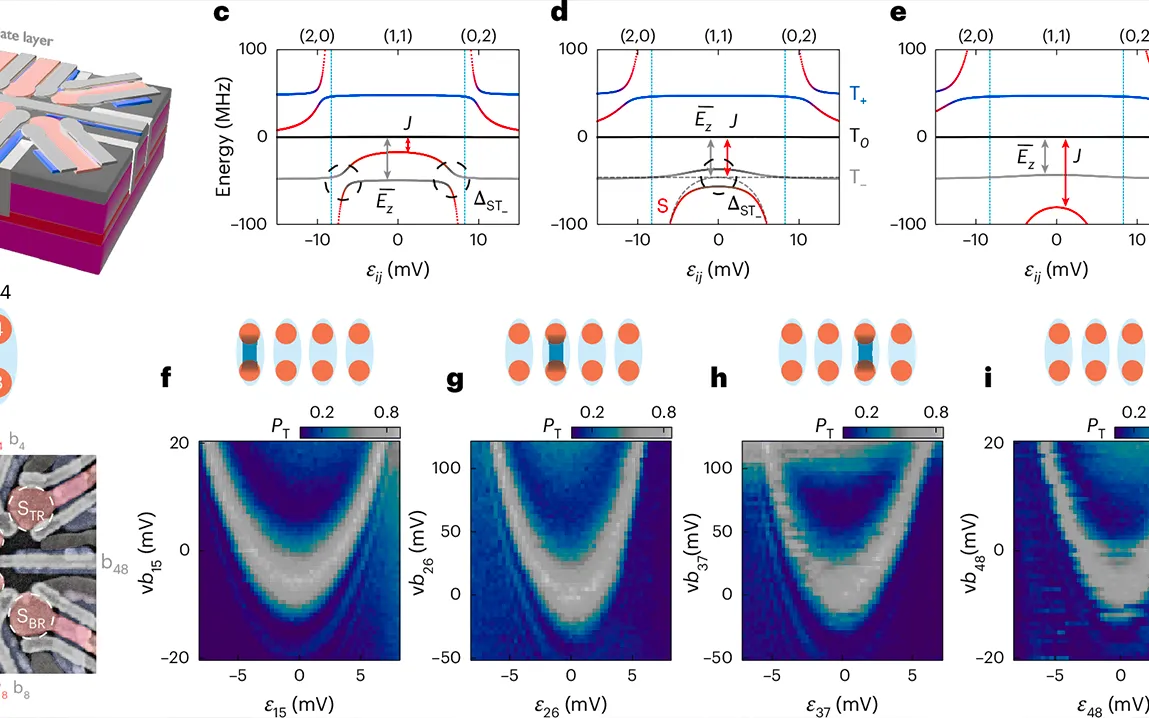Quantum computing has been for years seen as the future of computational technology, from cryptography to material sciences. A breakthrough in this regard brings us closer to watching this potential turn into a reality as researchers have managed to demonstrate universal control over a system of four singlet-triplet qubits based on quantum dots. It was indeed an important milestone on the road to scalable and efficient quantum computing.
Understanding Qubits and Quantum Dots
The qubit is the quantum counterpart to the classically known bit, and it lies at the core of quantum computing. Whereas the classical bit represents information as a 0 or a 1, the qubit can exist in both states simultaneously due to the principle of superposition. This gives quantum computers the potential to handle huge amounts of information in parallel and exponential speedups for specific computational tasks.
Quantum dots are nanoscale semiconductor particles that confine electrons or holes in three dimensions. As such, they create artificial atoms. These are now fundamental structures in quantum computing because they play host to qubits, more specifically spin qubits, where the quantum information is stored in the spin state of an electron or hole.
Singlet-Triplet Qubits: A Primer
Singlet-triplet qubits are a particular variety of spin qubits, created by two coupled spins. The term ‘singlet’ defines the configuration in which the spins are oppositely paired, with total spin zero. On the other hand, a ‘triplet’ was defined as the configurations with one total spin since the spins were parallel. What makes this type of qubit especially appealing for quantum computing is the possibility to electronically manipulate these states.
The Breakthrough: Universal Control of Four Qubits
Universal control over qubits forms the foremost essential prerequisite for quantum computation, as it would allow, in principle, the realization of any quantum algorithm. In the present work, the researchers achieve this for a system comprising four singlet-triplet qubits on a 2×4 germanium quantum dot array. Every nearest-neighbor spin in this array is fully and controllably interacting to allow complex quantum operations.
Key Achievements
- Two-Axis Single-Qubit Control: The group demonstrated the two-axis, high-fidelity control of single qubits-a requirement in realizing a wide class of quantum gates.
- Two-Qubit Gates in the SWAP Style: They successfully implemented SWAP gates between all pairs of neighboring qubits. SWAP gates are vital for interchanging the states between two qubits and form a basis in quantum algorithms and in protocols targeting error correction.
- Entanglement Creation and Distribution: The team experimentally created and distributed entanglement over the qubit array by combining single and two-qubit operations. The entanglement is a special quantum feature wherein the qubits become interdependent in their properties; the state of one qubit instantly influences the state of another, irrespective of the distance between the two.
Quantum Computing Implications
The consequence of this result, regarding quantum computing in the near future, is threefold:
- Scalability: Being able to demonstrate control over a structured array of four qubits gives an indication that scalability toward larger qubit systems is possible for more practical quantum computers, solving complex problems.
- Error Correction: The ability to perform precise operations on multiple qubits represents the baseline requirement to reach quantum error correction codes, which mitigate one of the most critical classes of errors inherent in quantum computations.
- Quantum Simulations: Controlled multi-qubit systems are able to simulate quantum phenomena, gaining insight into very complicated quantum systems that are practically inaccessible by any other means.
Challenges and Future Directions
So far, this development represents a big stride forward, but the challenges along the road are numerous:
- Decoherence: Quantum systems are prone to decoherence-a process whereby interactions with the environment destroy quantum properties of the qubits. The key to reliable quantum computing will therefore be the development of techniques protecting the qubits from such processes of decoherence.
- Error Rates: While the researchers were able to perform operations at very high fidelity, for longer and more complex quantum computations, these error rates need to be reduced further.
- Integration: This incorporates the quantum dot-based qubits into current technology; the system is scalable to more qubits without losing control and coherence. The challenge remains technological in nature.
Conclusion
Demonstrating universal control of a four-qubit system definitely marks one major milestone in research into quantum computing. This really shows the active platform for scalable quantum processor construction using the singlet-triplet qubits of germanium quantum dot arrays. As the scientists keep overcoming the remaining challenges, this breakthrough brings closer to realization the transformational power of quantum computing across many scientific and technological domains.



